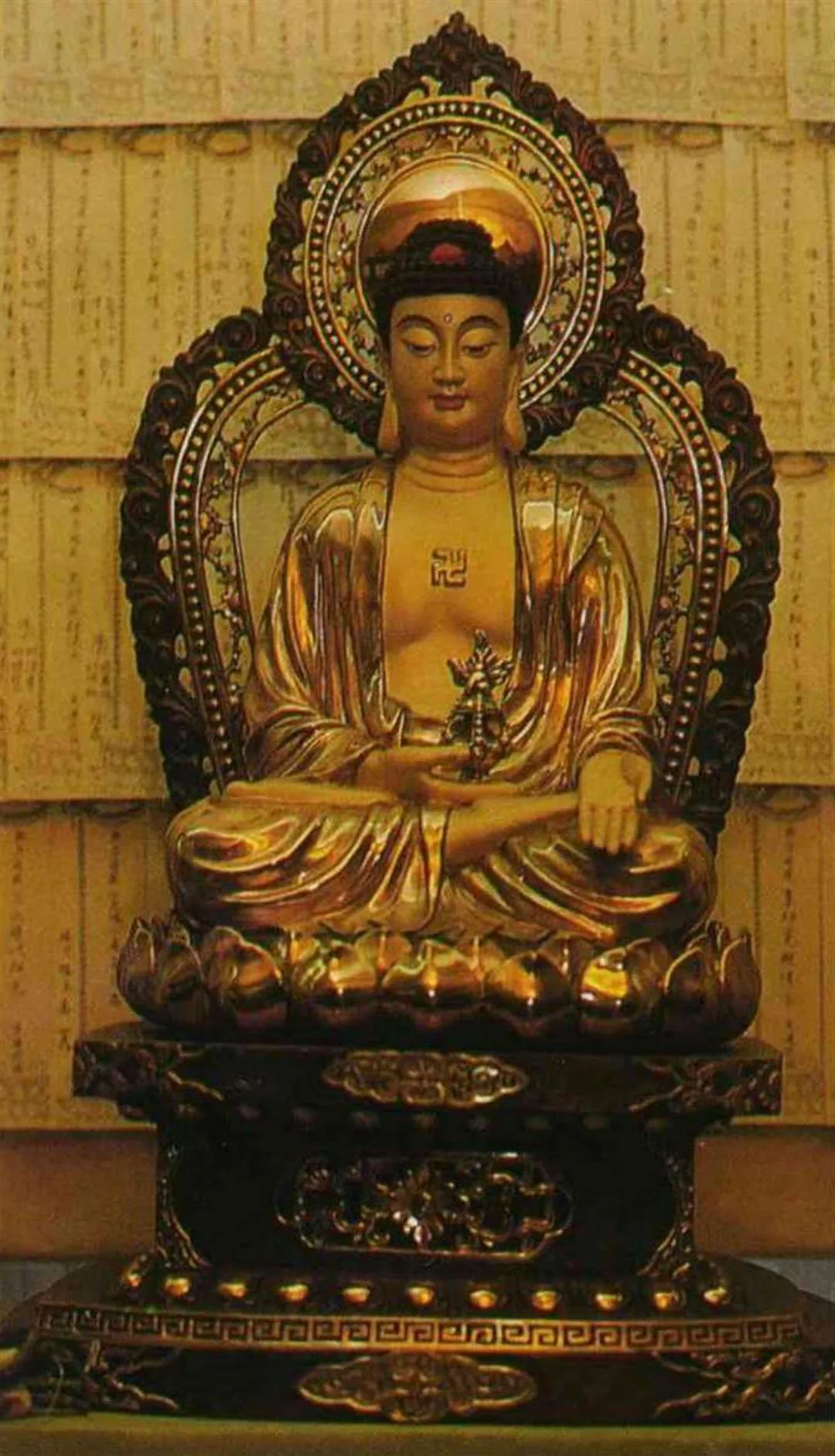Although each and every Buddha can cure illness and disease, the Bhaisajya-guru Buddha of the Pure Land of the East specially vowed to eliminate pain and disease from the minds and bodies of all living things, so he is revered as the Buddha of Medicine, or the Master of Healing. He is attended on either side by Suryaprabha, or Sunlight, and Candraprabha, or Moonlight.
Bhaisajya-guru Buddha is often represented as making a gesture of consolation with his right hand and holding a bowl of medicine in his left, and his throne is flanked by a seven-layer lamp of longevity and a 49-foot-long five-color pennant to accent his beneficent nature.
An unimaginably vast distance east of this world of ours lies a realm called Bhaisajyaguruvaidurya-prabhasa, or the Pure Crystal Land of the East, which the Bhaisajya-guru Buddha can guide us to. The Pure Crystal Land is laid out no differently than the Western Paradise. The ground is bedecked with crystals and jewels, and the walls, terraces, palaces, roofs, and windows are constructed of the seven precious gems. The land is free of evil and pain.
It is said that when the Bhaisajya-guru Buddha achieved enlightenment, the top of his head emitted a radiance tens of thousands of feet high, his mouth chanted incessantly, the earth shook, and any beings the light shone on became free of pain.
Even today Buddhists who worship him can cure the sick in his name. They must cleanse themselves by bathing and rinsing out their mouths and then recite a sacred formula 108 times over the food or medicine to be given to the sick person.
During his life on earth the Bhaisajya-guru Buddha made twelve vows, hoping that after he achieved buddhahood the prayers of all sentient beings would be answered and those who called on him would be of perfect health and free of disease. His "general hospital" also features the world's most advanced obstetrics department, with safe and painless delivery for mother and infant guaranteed.
Virtuous men and women who devoutly chant his name will be received after they die by eight major bodhisattvas and directed to the Pure Land of the East, where they will be reborn in the Crystal Realm of multicolored gems and flowers. If they are reborn into the human world they will be rulers, industrialists, or landlords. They will be upright-looking, intelligent, strong, and healthy, and they will be blessed with a full complement of parents, brothers and sisters, spouse, and children.
The method of the Bhaisajya-guru Buddha can be followed as a "general course" or an "accelerated course." In the general course all you need to do is to chant his name before flowers and incense every day after bathing and to worship the figures of Buddha, Dharma, and Sangha, the Buddhist trinity.
In the accelerated course, which is specially designed for the ill, you must fast for seven days and seven nights, pray to him at the third hour of the morning and the afternoon, recite his scriptures 49 times, make seven statues to him, each with seven lamps that burn for 49 days, erect 49 five-color flags, and release 49 birds, fish, and reptiles. Of course you mustn't overlook retaining the services of a priest of his sect.
The Buddhist Tzu-chi General Hospital in Hualien has a statue of the Bhaisajya-guru Buddha on its roof, and many patients and family members go there to pray each day.
Maybe you can try it too.
[Picture Caption]
The Bhaisajya-guru Buddha in his paradise of the Pure Crystal Land of the East, emitting radiance from the crown of his head and performing a gesture of consolation. Suryaprabha, or Sunlight, is on the left and Candraprabha, or Moonlight, on the right. The tin rod and the medicine bowl represent the merciful vow of the Buddha of Healing to relieve all sentient beings of pain. (illustration courtesy of the National Palace Museum).
This is a statue of Bhaisajya-guru Buddha at Pu Men Temple in Taipei.
Believers often pray to it for good health, and medicine is said to be more effective if it is brought to the statue before being taken.

This is a statue of Bhaisajya-guru Buddha at Pu Men Temple in Taipei. Believers often pray to it for good health, and medicine is said to be more effective if it is brought to the statue before being taken.